Edibility Good
Showing 49–64 of 158 results
-
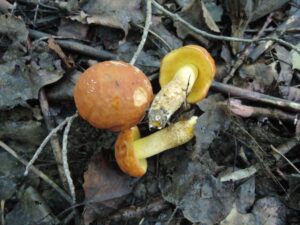
Hemileccinum subglabripes
Think hortonii with a smooth or barely-wrinkled red-brown cap. Cap flesh may taste slightly acidic, & may blue, but rarely.
Read more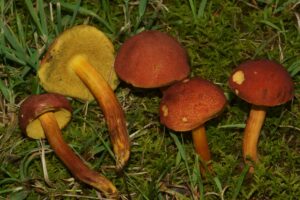
Hortiboletus campestris (“Field Bolete”)
Found in lawns and roadsides. Yellow stem- & paler cap-flesh both stain greenish blue. Yellow pores age to greenish- or olive-yellow. Never gets bigger than 1-1/2″ across.
Read more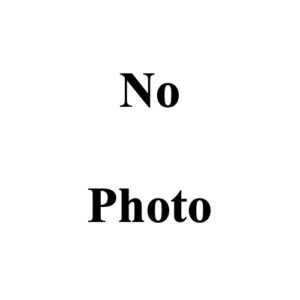
Hortiboletus coccyginus
West coast species. Red cap fades to pink with yellow. Yellow, very xerocomoid yellow pores age blue-green when old. White cap flesh over yellow stem flesh.
Read more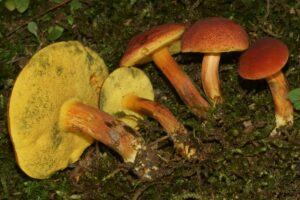
Hortiboletus flavorubellus
Bright yellow cap flesh slowly stains bluish-green, while stem flesh stains blue/green on top & orange by the base. Very deep xerocomoid yellow pores stain blue/green.
Read more
Imleria pallida (“Pallid Bolete”)
White cap browns with age. White pores age yellow to greenish-yellow and bruise an odd gray-green that fades to grayish brown.
Read more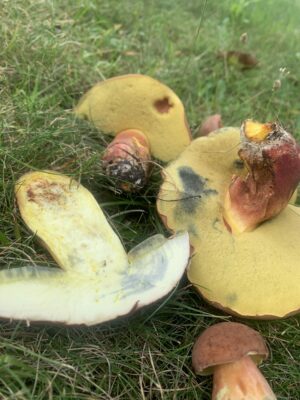
Lanmaoa fallax (nom. prov.)
Stout red-and-yellow. White mycelium. Brick- to pinkish-red cap that fades brown w/age. Little to no bouillon smell. Pores and skin often bruise blue.
Read more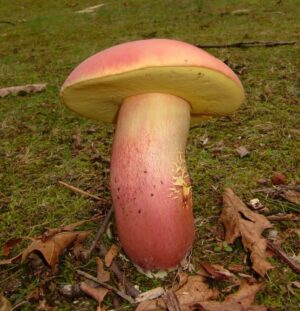
Lanmaoa pallidorosea (“Bouillon Bolete”)
Think “muddled bicolor.” Firm, yellow flesh often smells like beef bouillon & stem flesh may slowly stain green from the base up and/or stem skin in.
Read more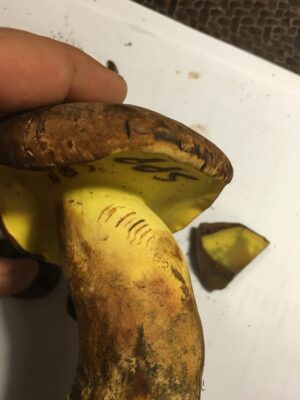
Lanmaoa pseudosensibilis
Yellow pores bruise blue before slowly (10-15 minutes) fading to a deep, rich, characteristic brown. Yellow flesh bruises blue before fading to brown.
Read more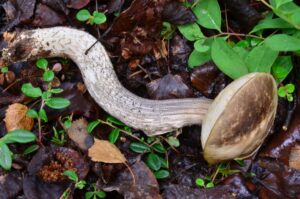
Leccinum alaskanum
Found in Alaska. Dark brown to blackish, often mottled cap ages from velvety to slightly viscid. Whitish pores age to dull brown & bruise darker brown.
Read more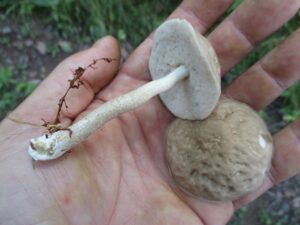
Leccinum albellum
White/buff/pink/gray cap is usually quite wrinkled, a bit pointy, & cracks/fissures w/ age. Tubes are notably depressed at the skinny stem.
Read more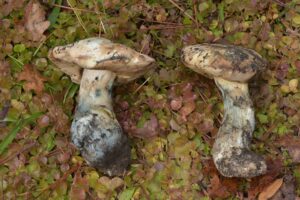
Leccinum arbuticola
Brown/olive pores darken or stain pinkish-brown. White stem instantly stains blue & has spots that age to dark brown. Viscid-when-damp tan/brown cap may bruise blue, but white flesh stains red & then brown.
Read more
Leccinum arenicola (“Sand Loving Leccinum”)
Stout bolete growing near north Atlantic beaches in sandy soil. Wrinkled, oft-cracked or fissured, orange to yellow-orange cap w/dry edge fades w/age.
Read more
Leccinum armeniacum (“Apricot Bolete”)
Cap is apricot-orange. Pores stain an odd lilac or flesh color. Stem is white with spots. Likes madrone.
Read more
Leccinum chalybaeum
Very firm, shorter salt & pepper stem. Flesh bruises pinkish, aging toward dark purplish gray. Whitish pores are depressed by the stem & bruise olive/brownish. Likes sandy soil near oak.

